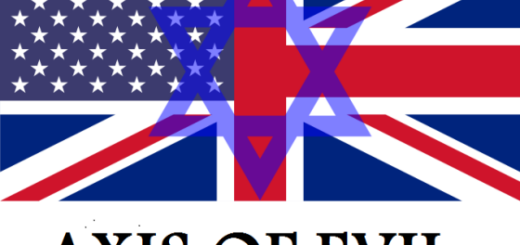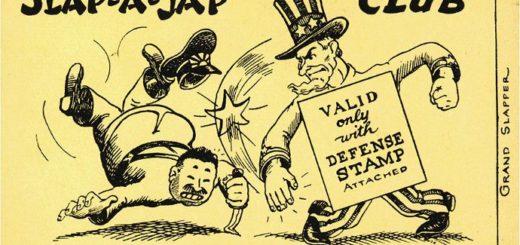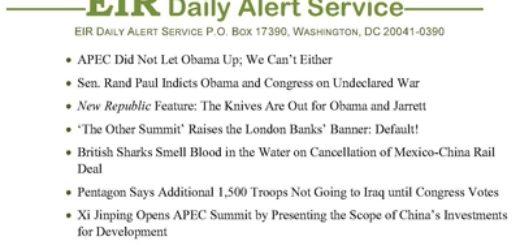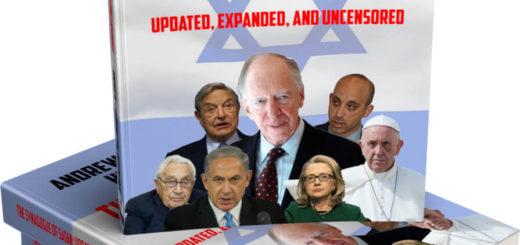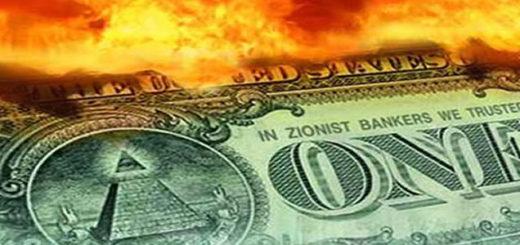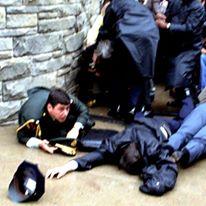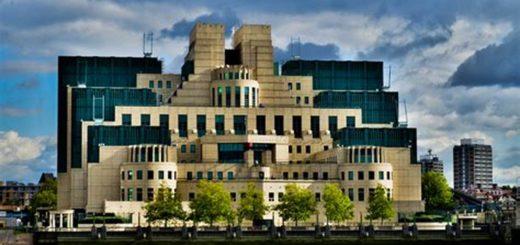Coinbase (COIN) CEO Brian Armstrong indicated that the crypto exchange would consider moving away from the U.S. if the regulatory environment for the industry does not become clearer.
“Anything is on the table, including relocating or whatever is necessary” he said after former U.K. Chancellor George Osbourne asked whether he could see Coinbase leaving the U.S. at Fintech Week in London.
“I think the U.S. has the potential to be an important market for crypto, but right now we are not seeing that regulatory clarity that we need,” he said. “I think in a number of years if we don’t see that regulatory clarity emerge in the U.S. we may have to consider investing more elsewhere in the world.”
Coinbase had $240M cash balance at Signature Bank, expects full recovery
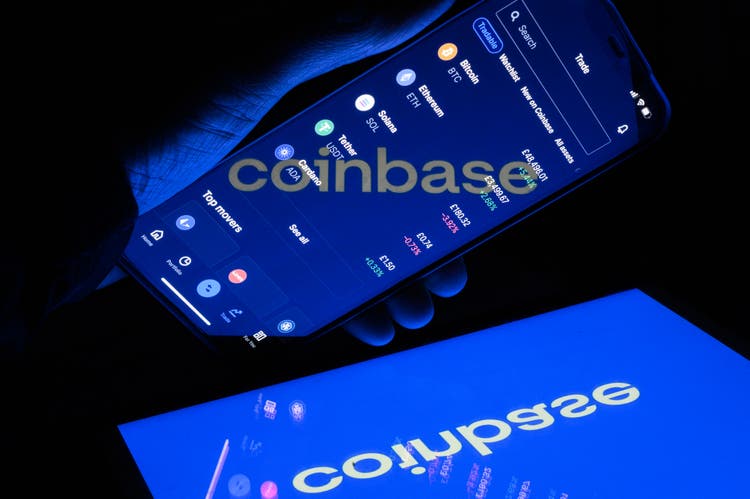
Leon Neal/Getty Images News
- After New York state took possession of Signature Bank (SBNY) and transferred it to the Federal Deposit Insurance Corp. (FDIC), Coinbase (NASDAQ:COIN) on Sunday said it had a cash balance of ~$240M at Signature Bank as of Friday.
- “As stated by the FDIC, we expect to fully recover these funds,” the company said.
- Earlier on Sunday, the U.S. Treasury Department, FDIC, and Federal Reserve said SBNY’s depositors will have access to all their funds with no expenses borne by taxpayers.
(Editor’s note: An earlier version of this article incorrectly stated that Coinbase had $240 billion deposited at Signature Bank rather than the correct $240 million.)
Comment: FDIC 100% bailed out this Coinbase Bank which is 100% ILLEGAL. If you don’t think Cryptos are Deep State Creations THINK AGAIN! Bill Gates is a CIA Asset and the unknown Satoshi NAKAMOTO is CIA!
——————————————————————————————————————————————————————
Was This a Bailout? Skeptics Descend on Silicon Valley Bank Response.
The government took drastic action to shore up the banking system and make depositors of two failed banks whole. It quickly drew blowback.
Was This a Bailout? Skeptics Descend on Silicon Valley Bank Response.
The government took drastic action to shore up the banking system and make depositors of two failed banks whole. It quickly drew blowback.


Jeanna Smialek and
WASHINGTON — A sweeping package aimed at containing damage to the financial system in the wake of high-profile failures has prompted questions about whether the federal government is again bailing out Wall Street.
And while many economists and analysts agreed that the government’s response should not be considered a “bailout” in key ways — investors in the banks’ stock will lose their money, and the banks have been closed — many said it should lead to scrutiny of how the banking system is regulated and supervised.
The reckoning came after the Federal Reserve, Treasury and Federal Deposit Insurance Corporation announced Sunday that they would make sure that all depositors in two large failed banks, Silicon Valley Bank and Signature Bank, were repaid in full. The Fed also announced that it would offer banks loans against their Treasuries and many other asset holdings, treating the securities as though they were worth their original value — even though higher interest rates have eroded the market price of such bonds.
The actions were meant to send a message to America: There is no reason to pull your money out of the banking system, because your deposits are safe and funding is plentiful. The point was to avert a bank run that could tank the financial system and broader economy.
ADVERTISEMENT
It was unclear on Monday whether the plan would succeed. Regional bank stocks tumbled, and nervous investors snapped up safe assets. But even before the verdict was in, lawmakers, policy researchers and academics had begun debating whether the government had made the correct move, whether it would encourage future risk-taking in the financial system and why it was necessary in the first place.
“The Fed has basically just written insurance on interest-rate risk for the whole banking system,” said Steven Kelly, senior research associate at Yale’s program on financial stability. And that, he said, could stoke future risk-taking by implying that the Fed will step in if things go awry.
“I’ll call it a bailout of the system,” Mr. Kelly said. “It lowers the threshold for the expectation of where emergency steps kick in.”
While the definition of “bailout” is ill defined, it is typically applied when an institution or investor is saved by government intervention from the consequences of reckless risk-taking. The term became a swear word in the wake of the 2008 financial crisis, after the government engineered a rescue of big banks and other financial firms using taxpayer money, with little to no consequences for the executives who made bad bets that brought the financial system close to the abyss.
President Biden, speaking from the White House on Monday, tried to make clear that he did not consider what the government was doing to be a bailout in the traditional sense, given that investors would lose their money and taxpayers would not be on the hook for any losses. (Comment: More Bullshit from a Demented Old Man.)
“Investors in the banks will not be protected,” Mr. Biden said. “They knowingly took a risk, and when the risk didn’t pay off, investors lose their money. That’s how capitalism works.”
He added, “No losses will be borne by the taxpayers. Let me repeat that: No losses will be borne by the taxpayers.” (Comment: Bullshit! The FDIC is funded by Taxpayers and this Coinbase Bank is being bailed out by a Taxpayer funded FDIC which in essence leaves no money for the little guy in the coming Tidal Wave of Bank Failures.)
But some Republican lawmakers were unconvinced.
Senator Josh Hawley of Missouri said on Monday that he was introducing legislation to protect customers and community banks from new “special assessment fees” that the Fed said would be imposed to cover any losses to the Federal Deposit Insurance Corporation’s Deposit Insurance Fund, which is being used to protect depositors from losses.
“What’s basically happened with these ‘special assessments’ to cover SVB is the Biden administration has found a way to make taxpayers pay for a bailout without taking a vote,” Mr. Hawley said in a statement.
Image


Monday’s action by the government was a clear rescue of a range of financial players. Banks that took on interest-rate risk, and potentially their big depositors, were being protected against losses — which some observers said constituted a bailout.
ADVERTISEMENT
“It’s hard to say that isn’t a bailout,” said Dennis Kelleher, a co-founder of Better Markets, a prominent financial reform advocacy group. “Merely because taxpayers aren’t on the hook so far doesn’t mean something isn’t a bailout.”
But many academics agreed that the plan was more about preventing a broad and destabilizing bank run than saving any one business or group of depositors.
“Big picture, this was the right thing to do,” said Christina Parajon Skinner, an expert on central banking and financial regulation at the University of Pennsylvania. But she added that it could still encourage financial betting by reinforcing the idea that the government would step in to clean up the mess if the financial system faced trouble.
“There are questions about moral hazard,” she said.
One of the signals the rescue sent was to depositors: If you hold a large bank account, the moves suggested that the government would step in to protect you in a crisis. That might be desirable — several experts on Monday said it might be smart to revise deposit insurance to cover accounts bigger than $250,000.
But it could give big depositors less incentive to pull their money out if their banks take big risks, which could in turn give the financial institutions a green light to be less careful.
That could merit new safeguards to guard against future danger, said William English, a former director of the monetary affairs division at the Fed who is now at Yale. He thinks that bank runs in 2008 and recent days have illustrated that a system of partial deposit insurance doesn’t really work, he said.
Image

“Market discipline doesn’t really happen until it’s too late, and then it’s too sharp,” he said. “But if you don’t have that, what is limiting the risk-taking of banks?”
It wasn’t just the side effects of the rescue stoking concern on Monday: Many onlookers suggested that the failure of the banks, and particularly of Silicon Valley Bank, indicated that bank supervisors might not have been monitoring vulnerabilities closely enough. The bank had grown very quickly. It had a lot of clients in one volatile industry — technology — and did not appear to have managed its exposure to rising interest rates carefully.
“The Silicon Valley Bank situation is a massive failure of regulation and supervision,” said Simon Johnson, an economist at the Massachusetts Institute of Technology.
The Fed responded to that concern on Monday, announcing that it would conduct a review of Silicon Valley Bank’s oversight. The Federal Reserve Bank of San Francisco was responsible for supervising the failed bank. The results will be released publicly on May 1, the central bank said.
“The events surrounding Silicon Valley Bank demand a thorough, transparent and swift review,” Jerome H. Powell, the Fed chair, said in a statement.
Mr. Kelleher said the Department of Justice and the Securities and Exchange Commission should be looking into potential wrongdoing by Silicon Valley Bank’s executives.
“Crises don’t just happen,” Mr. Kelleher said. “People take actions that range from stupid to reckless to illegal to criminal that cause banks to fail and cause financial crises, and they should be held accountable whether they are bank executives, board directors, venture capitalists or anyone else.”
One big looming question is whether the federal government will prevent bank executives from getting big compensation packages, often known as “golden parachutes,” which tend to be written into contracts.
Treasury and the F.D.I.C. had no comment on whether those payouts would be restricted.
Image

Uninsured depositors at Silicon Valley Bank and Signature Bank, who had accounts exceeding $250,000, will be paid back.Credit…David Dee Delgado/Reuters
Comment: The huge depositors were predominantly , if not all, JEWISH and the Federal Reserve in Jewish just like the CIA is Jewish and created Cryptos & Controls Biden & Congress. It’s the Jews covering their own losses/asses. This is all Jewish Banksters Financial manipulation & Fraud.
Many experts said the reality that problems at Silicon Valley Bank could imperil the financial system — and require such a big response — suggested a need for more stringent regulation.
While the regional banks that are now struggling are not large enough to face the most intense level of regulatory scrutiny, they were deemed important enough to the financial system to warrant an aggressive government intervention.
“At the end of the day, what has been shown is that the explicit guarantee extended to the globally systemic banks is now extended to everyone,” said Renita Marcellin, legislative and advocacy director at Americans for Financial Reform. “We have this implicit guarantee for everyone, but not the rules and regulations that should be paired with these guarantees.”
Daniel Tarullo, a former Fed governor who was instrumental in setting up and carrying out financial regulation after the 2008 crisis, said the situation meant that “concerns about moral hazard, and concerns about who the system is protecting, are front and center again.”
Jeanna Smialek writes about the Federal Reserve and the economy for The Times. She previously covered economics at Bloomberg News. @jeannasmialek
Alan Rappeport is an economic policy reporter, based in Washington. He covers the Treasury Department and writes about taxes, trade and fiscal matters. He previously worked for The Financial Times and The Economist. @arappeport
The Downfall of Silicon Valley Bank
One of the most prominent lenders in the world of technology start-ups collapsed on March 10, forcing the U.S. government to step in.
-
A Rapid Fall: Struggling under the weight of ill-fated decisions and panicked customers, Silicon Valley Bank became the biggest U.S. bank to fail since the 2008 financial crisis. Here is how its collapse unfolded.
-
The Aftermath: The fallout of the collapse quickly spread to Silicon Valley Bank’s parent company and other regional banks, including Signature Bank in New York. Midsize banks like Pacific Western also came under pressure amid worries that they might face a similar fate.
-
The Fed’s Reaction: Before the crisis, Fed officials had been contemplating making several more rate moves to bring inflation back under control. But they had to adjust their views after the shock to the banking system, minutes from their March 21-22 meeting show.
-
A Buyer Emerges: First Citizens BancShares said that it would acquire Silicon Valley Bank from the Federal Deposit Insurance Corporation. Regulators had been looking for a buyer since seizing control of the failed bank.
-
Economic Fallout: Economists are watching for the impact of the bank tumult across many industries, with some fearing a broad slowdown. And new research suggests that large parts of the country remain vulnerable to the risk of widespread bank failure in the event of a run on deposits.




